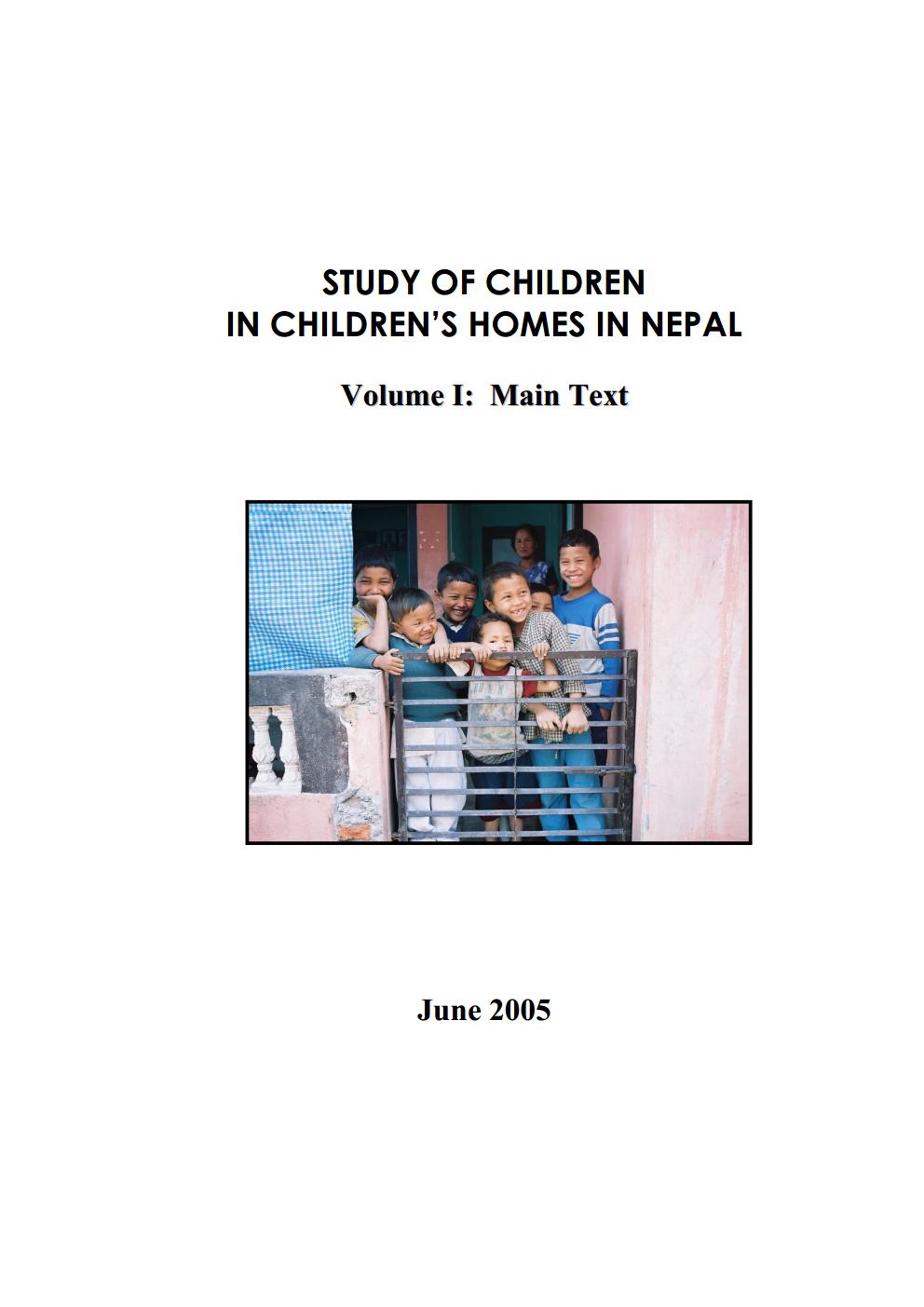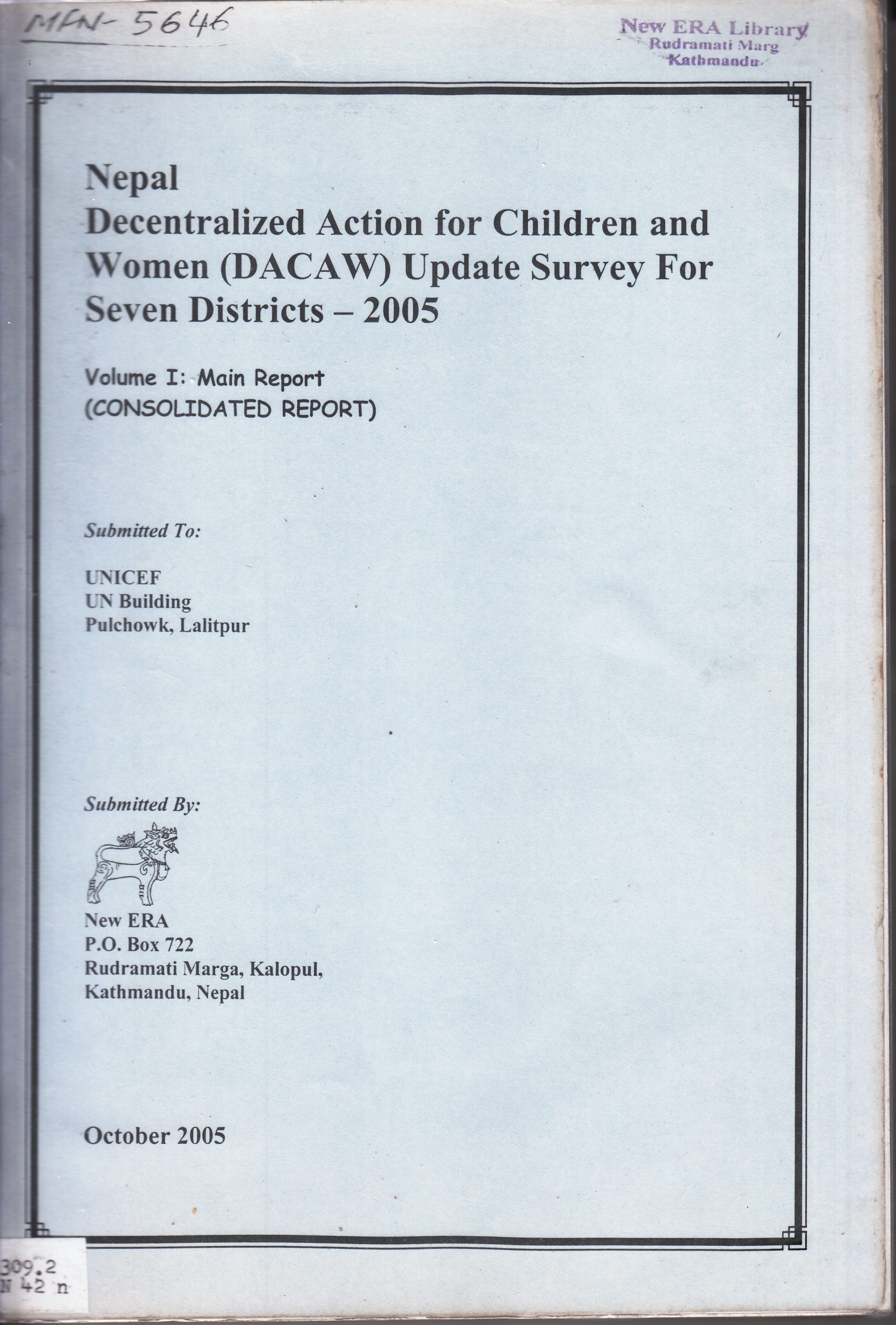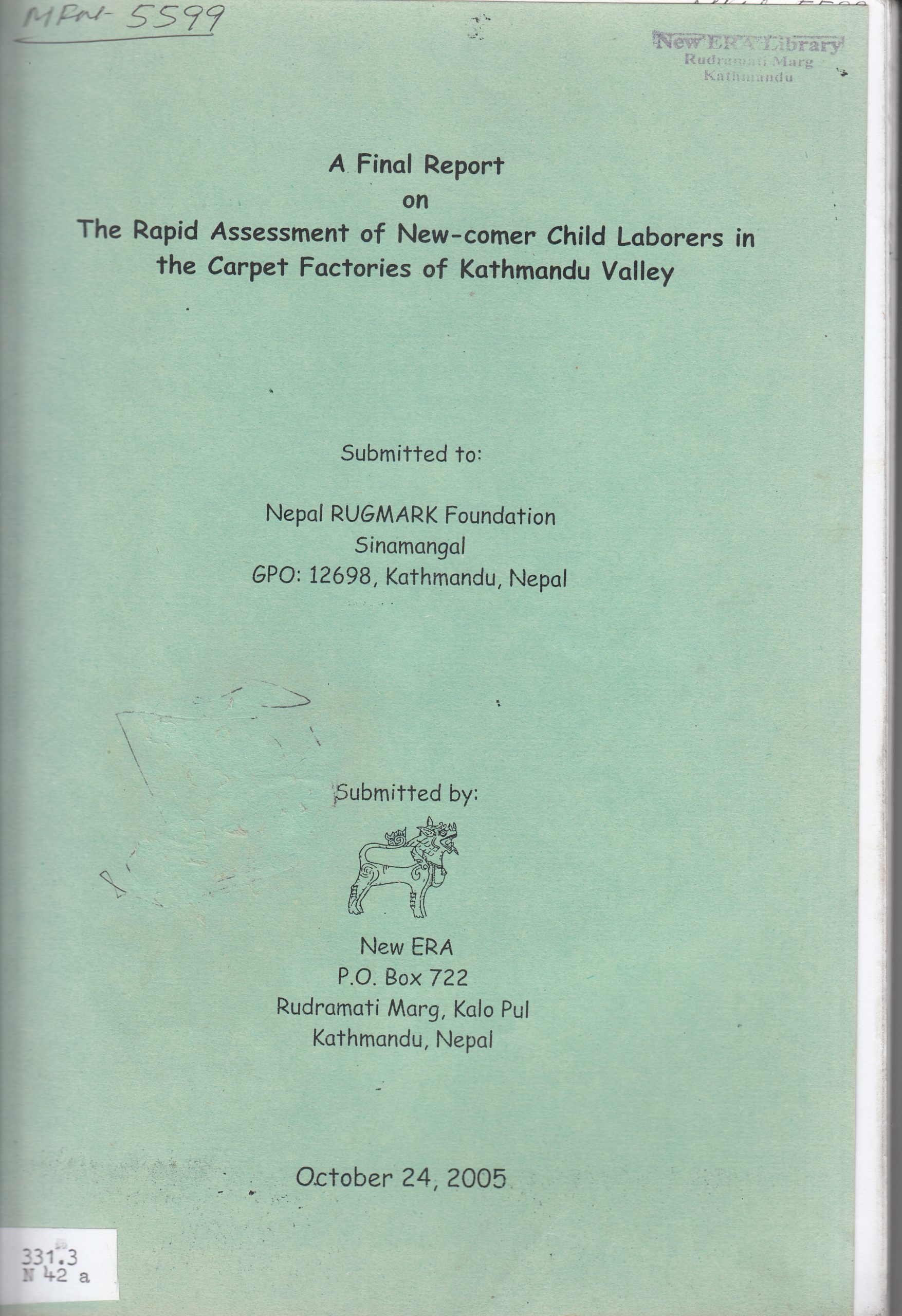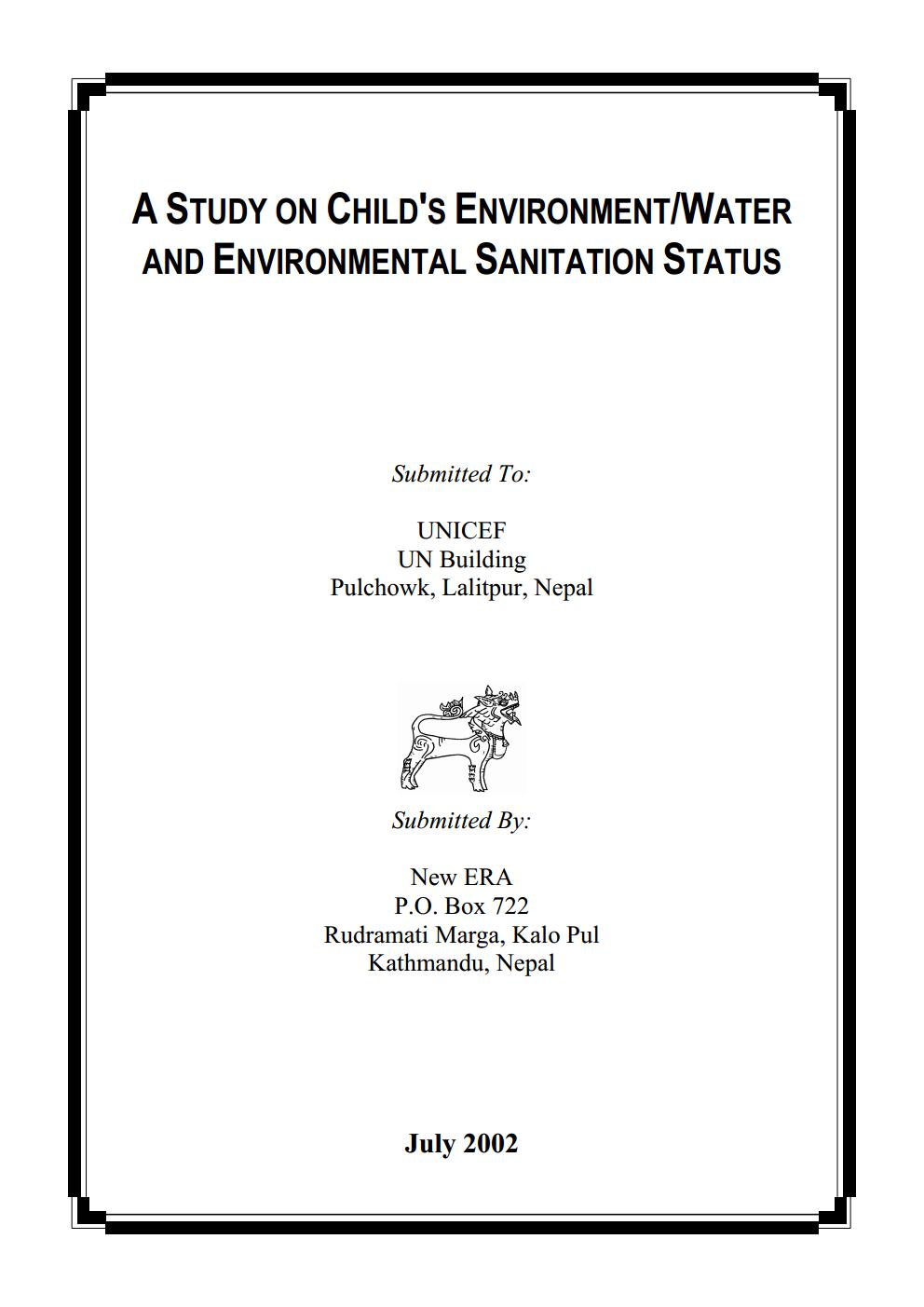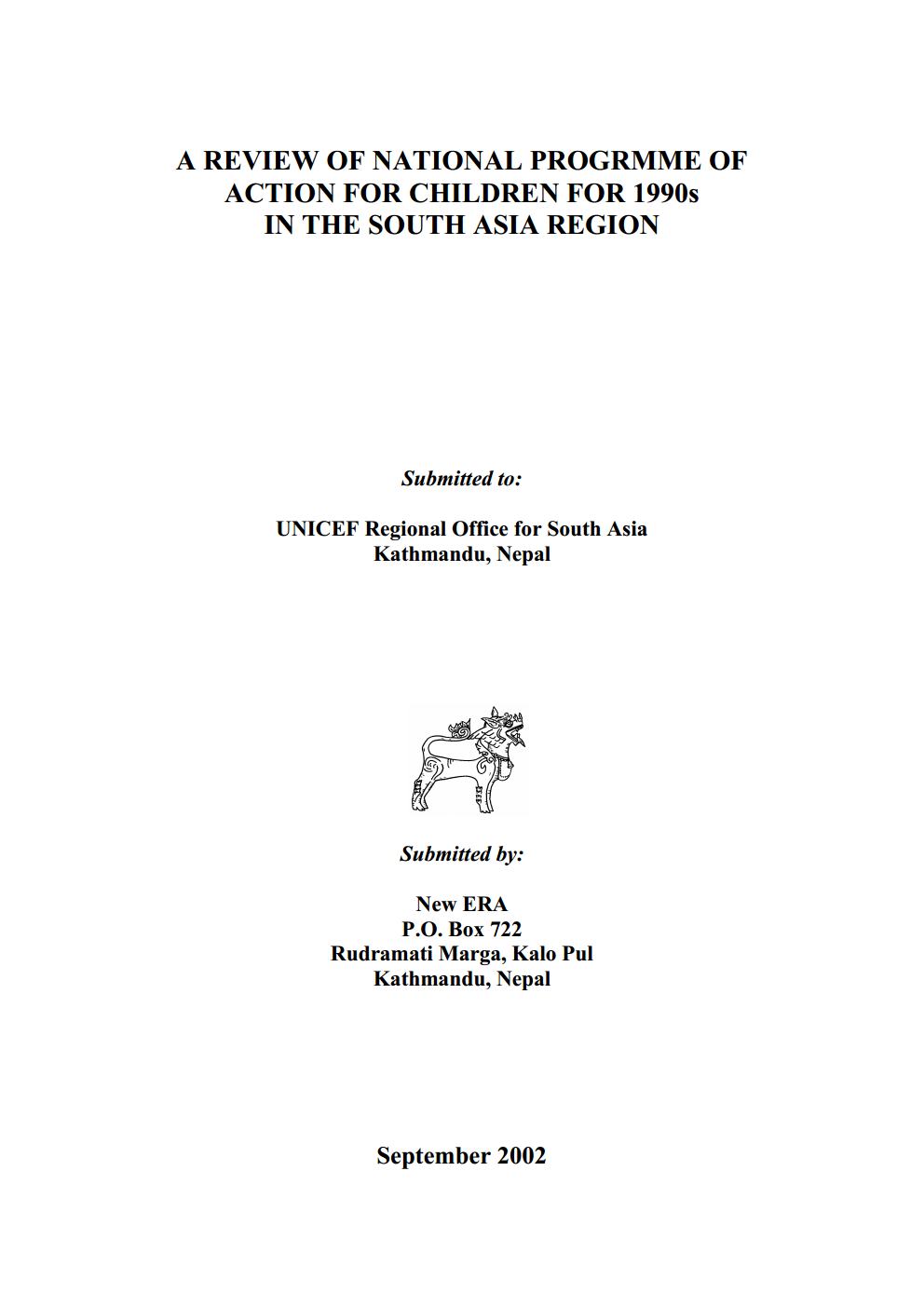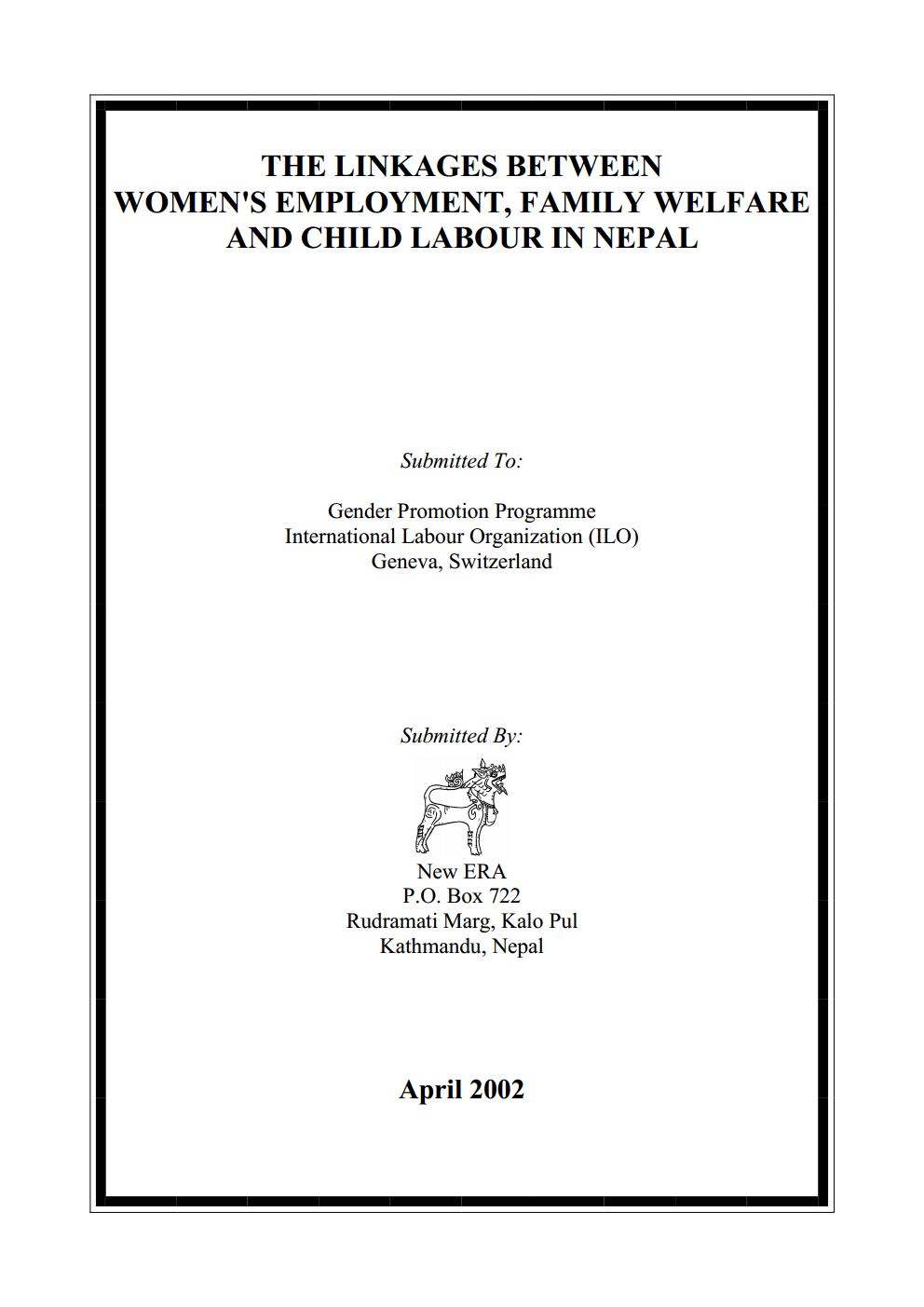In recent years, the number of children’s homes in urban areas has been increasing. This is particularly true in the Kathmandu Valley as children from outlying districts, displaced by the insurgency, flock to the capital at an alarming rate. Many of these children end up in children’s homes. This study assessed 335 children’s homes in 11 districts in Nepal. The study identified and prepared a list of children’s homes in these districts. The study also analyzes the trend in the number of children admitted to the homes over the past few years since the conflict has intensified.
Report Type: Children
Nepal Decentralized Action for Children and Women (DACAW) Update Survey for Seven Districts 2005 – Consolidated Report
Decentralized Action for Child and Women (DACAW) program was officially started as Decentralized Planning for the Child Programme (DPCP) in 1998. The program was focuses on child health, maternal and neonatal health, safe drinking water and sanitation, basic education, protection of children and women, awareness of HIV/AIDS and so on. The key strategies followed for this include recurrent application of Community Action Process (CAP), improvement in responsive service delivery and promotion of decentralized governance in favor of children, mothers and caretakers. This survey was conducted to assess the changes of status of women and children in the program districts between 1998 and 2003. The study also examined the CAP settlements in relation to both responsive service delivery and decentralized governance.
The Rapid Assessment of Newcomer Child Laborers in the Carpet Factories of Kathmandu Valley
This study makes a rapid assessment of newcomer child laborers in Nepal. The study focuses on three areas, the socio-economic background of newcomer child laborers, factors triggering the recent increase in child laborers in carpet factories, and the working condition in carpet factories prior to rehabilitation.
A Study on Child’s Environment, Water and Environmental Sanitation Status
Until the mid 1990s, water and sanitation was one of the major program focuses of UNICEF. In the early years the
focus was on the installation of water supply system and building capacity in relation to water supply systems. As it
became clear that the installation of water supply systems had not improved children’s health, the focus shifted to
hygiene and sanitation. UNICEF initiated an inter-sectoral community based program called Decentralized Planning
for Child Program (DPCP) which works with the community, the DWSS, NRCS and NEWAH. This study examines
the status of water, hygiene and sanitation in 11 DPCP and 6 non-DPCP districts. The study also assesses the
progress of hygiene and sanitation interventions for the current MPO period in non-DPCP districts.
A Review of National Program of Action for Children for 1990s in the South Asia Region
This review of the National Program of Action (NPA) for the SAARC region was commissioned by UNICEF Regional
Office South Asia (ROSA) to identify and record lessons learned from the implementation of the NPA in the region during the 1990s. The review draws lessons from the formulation process and strategies adopted by SAARC countries to achieve the World Summit Goals; the cost of implementing these strategies; the success of these strategies in achieving the WSG; reporting mechanisms; and adherence of the NPA to the child rights approach.
The Linkage between Women’s Employment, Family Welfare and Child Labour in Nepal
This study was conducted to understand the link between the employment of women and child labor. The main aim of this study was to enhance the knowledge of the nature of the linkages between women’s employment, family welfare and child labor in Nepal. The study also looks at the socio-economic background of women workers and that of their husbands, the work environment of women, empowerment of women, household division of labor and the work status of the children of women workers. (Please click for full document)
A Situation Analysis of Sex Work and Trafficking in Nepal with Reference to Children
This study was to investigate the “root causes” of entry of children into sex work and the trafficking phenomenon associated with them. The study was conducted in three phases: (a) nation-wide survey of sex work and trafficking impact; (b) in-depth interviews with child and adult sex workers in Nepal and in India; and (c) investigation of community, family and non-family situations prior to the child becoming sex workers or women or girls falling victims to organized trafficking. The study identified the key elements in the prior family, social and community situations of commercial sex workers which are the causes of children entering sex work. It examines family, social and community situations which places children at risk of entering sex work. It further identifies the key elements in the prior family, social and community situations of trafficked girls and women which contribute to their being trafficked or entering sex work in India.



